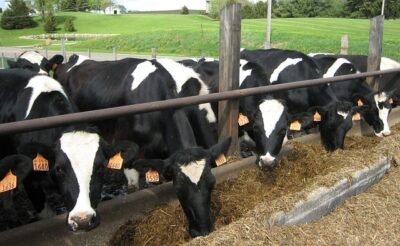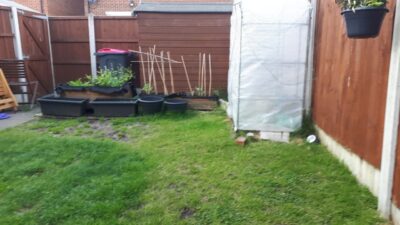Top Skills to Learn for Self-Sufficiency
In this Article...
A Guide to Building a Reliable Lifestyle
Embarking on the path towards self-sufficiency is a transformative journey that empowers individuals to take control of their own sustenance and reduce their reliance on external systems. To truly thrive in a self-sufficient lifestyle, it is essential to acquire a range of skills that enable you to grow your own food, and raise animals. In this blog post, we will delve into the top skills you should learn to become self-sufficient and provide a detailed guide to help you embrace a more fulfilling lifestyle.
Gardening: Cultivating Your Self-Sufficiency
Gardening forms the foundation of self-sufficiency, offering a profound connection to the land and the bounty it provides. Here’s an in-depth look at the skills and knowledge you’ll want to acquire as you embark on your gardening journey:
- Soil Mastery: Understanding your soil is paramount. Learn about soil composition, pH levels, and how to amend your soil for optimal plant growth. Different crops thrive in specific soil types, so knowing your soil is like having the key to a flourishing garden.
- Organic Fertilisation: Embrace the principles of organic gardening by learning to create your compost and use organic fertilisers. This approach not only enriches the soil but also reduces your reliance on synthetic chemicals.
- Companion Planting: Explore the art of companion planting, a technique where certain plants are grown together to enhance each other’s growth or deter pests. For instance, planting marigolds alongside tomatoes can help keep aphids at bay.
- Pest Management: Developing pest control strategies is vital for a thriving garden. Familiarise yourself with natural and organic methods to keep unwanted insects and critters in check, reducing the need for harmful pesticides.
- Crop Rotation: Implement crop rotation to prevent soil depletion and reduce the risk of diseases and pests. By systematically changing the location of different plant families each season, you can maintain soil fertility and crop health.
- Succession Planting: Extend your growing season by practising succession planting. This involves planting new crops as soon as the previous ones are harvested. It maximises your yield and ensures a continuous supply of fresh produce.
- Season Extension: Learn techniques for extending your growing season, such as using cold frames, row covers, or greenhouses. These methods allow you to cultivate crops even during colder months.
- Space Optimization: Depending on your available space, explore various gardening methods to optimise productivity. Raised beds, container gardening, and vertical gardening are excellent options for maximising yields in limited spaces.
- Seed Saving: Become proficient in seed saving to preserve heirloom and open-pollinated varieties. This skill not only promotes genetic diversity but also reduces your reliance on purchasing seeds each year.
- Water Management: Efficient water usage is crucial. Learn about drip irrigation, rainwater harvesting, and water-saving techniques to minimise wastage and ensure your garden thrives even during dry spells.
- Crop Selection: Choose crops that are well-suited to your climate and region. Understanding your local growing conditions will help you select plants that have a higher chance of thriving.
- Soil Testing: Periodically test your soil to assess its nutrient levels and pH. Soil tests can guide you in making necessary amendments to create the best possible environment for your plants.
Animal Husbandry: Nurturing Your Self-Sufficiency with Livestock
Adding animals to your self-sufficient lifestyle can significantly enrich your journey by providing food, fibre, and even companionship. Here’s a comprehensive look at the skills and knowledge you’ll want to acquire for successful animal husbandry:
- Animal Selection: Begin by selecting the right animals for your self-sufficiency goals and available space. Research different breeds and species to understand their specific needs and suitability to your climate.
- Shelter Building: Master the art of constructing shelters or coops that provide protection from the elements and potential predators. Properly designed and insulated housing is crucial for the well-being of your animals.
- Animal Nutrition: Learn about animal dietary requirements. Different species have distinct nutritional needs, so ensure that you can provide the appropriate feed and supplements to keep them healthy.
- Healthcare Knowledge: Acquire essential knowledge about animal healthcare, including deworming, and common ailments. Familiarise yourself with basic veterinary care or have access to a local veterinarian with expertise in the species you’re raising.
- Handling and Care: Understand the needs and behaviours of your animals. Proper handling and care techniques are essential for their well-being and for minimising stress.
- Breeding and Reproduction: If you plan to breed your animals, study the reproductive cycle, and birthing processes specific to the species you’re raising. Be prepared to manage pregnancies and care for newborns.
- Record Keeping: Maintain detailed records of your animals’ health, breeding, and production. These records will help you track their progress and make informed decisions regarding breeding, feeding, and healthcare.
- Ethical Treatment: Treat your animals with respect and provide them with a high standard of care. Their well-being should always be a top priority.
- Species-Specific Skills:
- Chickens: Learn about chicken breeds, coop design, egg production, and broiler management if you plan to raise chickens for eggs and meat.
- Rabbits: Understand rabbit breeds, housing requirements, breeding cycles, and meat production techniques if you intend to raise rabbits.
- Goats: Master goat care, milking procedures, and breeding practices if you’re raising goats for milk and meat.
- Bees: Explore beekeeping techniques, hive management, and honey extraction if you’re keeping bees for honey and pollination.
- Companionship: Recognize the companionship and emotional bonds that can develop between you and your animals. Building positive relationships with your livestock can make the experience even more rewarding.
- Safety Precautions: Implement safety measures to protect both yourself and your animals. This includes proper handling, secure enclosures, and emergency plans.
- Continuous Learning: Animal husbandry is a lifelong learning journey. Stay updated on best practices, attend workshops, and connect with experienced livestock keepers to expand your knowledge and network.
Food Preservation: Savouring the Fruits of Your Labor
One of the cornerstones of self-sufficiency lies in your ability to preserve the bounty of your harvest. It ensures that the flavours of summer and the abundance of your garden are available to nourish you throughout the year.
- Canning: Master the art of canning by understanding the principles of high-acid and low-acid foods. Ensure you have the proper canning jars, lids, and equipment, including pressure canners for low-acid foods. Follow tested recipes and guidelines for safe canning, including proper sterilisation and processing times.
- Dehydrating: Dehydration is a fantastic technique for preserving herbs, fruits, and vegetables while concentrating their flavours. Invest in a dehydrator or use your oven on low heat to remove moisture from produce. Slice the items evenly, arrange them on trays, and allow them to dry until they reach a crispy consistency. Store these treasures in airtight containers or jars to retain their flavours and nutritional value.
- Fermentation: Explore the fascinating world of fermentation. Fermenting foods not only preserves them but also enhances their nutritional value through probiotics. Delve into sauerkraut, kimchi, pickles, and kombucha. Understand the fermentation process, the role of beneficial microorganisms, and proper equipment.
- Freezing: Freezing is a versatile and convenient method for preserving the texture and nutrients of your garden’s bounty. Learn the art of blanching vegetables briefly before freezing them to maintain colour and texture. Package your treasures in airtight freezer bags or containers, ensuring you remove excess air to prevent freezer burn. Label and date your frozen goodies for easy identification and rotation.
- Storage Wisdom: Acquire knowledge about storage requirements for preserved foods. Some items thrive in cool, dark pantries, while others prefer the cold embrace of your freezer or the ambiance of your root cellar. Label your preserved goods with the date of preservation to ensure you use the oldest items first, maintaining freshness and nutritional value.
- Safety First: Safety is paramount when it comes to food preservation. Follow proper techniques, use quality ingredients, and refer to trusted recipes or resources for guidance. Understand the signs of spoilage and when it’s best to discard items that may have gone bad.
Seed Saving: Cultivating Self-Sufficiency Through Generations
In the world of self-sufficiency, the art of seed saving is not just a skill; it’s a legacy. It’s the practice of preserving the essence of your garden, ensuring that the best of each season’s produce lives on for generations to come.
- Seed Selection: Begin your seed-saving journey by carefully selecting the best plants from your garden. Look for traits like flavour, size, colour, and disease resistance that you wish to perpetuate. As you become attuned to your plants, you’ll notice subtle nuances that indicate the healthiest and most vigorous specimens.
- Harvesting Techniques: Timing is crucial when it comes to seed harvesting. Allow the fruits to mature fully on the plant before collecting the seeds. Depending on the plant, this may mean waiting until the fruit is overripe or until the seed heads have dried naturally.
- Cleaning Seeds: After harvesting, the seeds may still be surrounded by soil. Cleaning is a critical step to ensure the seeds remain viable and free from contamination.
- Storage Wisdom: Store seeds in a cool, dry place, preferably in airtight containers or envelopes. Be diligent about labelling and dating your seeds to ensure you use the oldest ones first. Some seeds, like those from onions or leeks, are short-lived and should be used within a year, while others, such as beans or tomatoes, can remain viable for several years.
- Genetic Diversity: Embrace the beauty of genetic diversity by exploring open-pollinated and heirloom varieties. These seeds carry a rich history and a wide array of unique traits.
- Preventing Cross-Pollination: Be aware of the potential for cross-pollination if you’re saving seeds from plants in the same family. Different varieties within the same species can interbreed, potentially producing offspring with traits you didn’t intend. Learning about isolation distances and implementing proper pollination techniques can help maintain the purity of your saved seeds.
- Seed Bank Management: Consider establishing a dedicated seed bank or storage system to organise and protect your precious seeds. This ensures easy access and helps you keep track of your seed inventory over the years.
Carpentry and DIY Skills: Crafting Self-Sufficiency, One Project at a Time
In the world of self-sufficiency, carpentry and DIY skills are your passport to a world of possibilities. With these skills, you can transform your vision into reality, building and maintaining structures that are not only functional but also uniquely tailored to your self-sufficient smallholding.
- Building Foundations: Begin your journey by mastering the basics of carpentry, from measuring and cutting wood to assembling frames. Understanding the fundamentals of sturdy construction is essential for every project that follows.
- Raised Beds: Constructing raised beds for your garden allows you to control soil quality and drainage. Learn how to build raised beds that optimise space, encourage healthy plant growth, and make gardening more accessible.
- Chicken Coops: Raising chickens for eggs and meat is a common practice on self-sufficient smallholdings. Acquire the skills to build a safe and comfortable coop that meets the needs of your feathered friends. Proper ventilation, nesting boxes, and predator-proofing are key considerations.
- Compost Bins: Composting is a cornerstone of self-sufficiency. Building efficient compost bins helps you recycle organic waste into nutrient-rich soil amendments. Explore various composting methods and construct bins that facilitate the composting process.
- Infrastructure Upkeep: Carpentry skills also come in handy for maintaining existing structures on your smallholding. Whether it’s repairing fences, roofing, or simple home repairs, your DIY expertise will save you time and money.
- Safety Protocols: Prioritise safety by understanding and implementing proper safety protocols and using the appropriate safety gear. Safety is paramount, especially when working with tools and heavy materials.
Water Harvesting and Conservation: Nurturing Self-Sufficiency, Drop by Drop
Water, the lifeblood of your self-sufficient oasis, deserves your utmost care and attention. By mastering the art of water harvesting and conservation, you can ensure that every precious drop fulfils its potential.
- Rainwater Collection: Learn how to design and install rainwater harvesting systems that channel rain into storage tanks for future use. This harvested rainwater becomes a valuable asset for irrigation, reducing your reliance on municipal water.
- Rain Barrels: Rain barrels are a cost-effective way to collect rainwater at a smaller scale. Understand the basics of setting up rain barrels around your property to capture rain runoff from rooftops. This harvested water can be used for watering plants, providing a good source of hydration for your garden.
- Water Conservation Practices: Conservation is as crucial as harvesting. Explore water-saving techniques, such as mulching, which helps retain soil moisture, and installing drip irrigation systems, which deliver water directly to plant roots. Implement efficient watering schedules to prevent overwatering and wastage.
- Soil Moisture Monitoring: Master the skill of monitoring soil moisture levels. This knowledge allows you to tailor your watering practices to the specific needs of your plants. Investing in soil moisture sensors or using manual methods will help you strike the perfect balance between hydration and conservation.
- Greywater Recycling: Consider recycling greywater from sources like sinks, showers, and washing machines for non-potable uses such as garden irrigation. Understanding the plumbing and filtration systems required for greywater recycling is essential to make the most of this resource.
- Water Quality: Understand the importance of water quality in both harvested rainwater and irrigation sources. Invest in filtration systems or treatment methods as needed to ensure that the water you use is safe for plants and, if applicable, human consumption.
Cooking and Food Preparation: Savouring Self-Sufficiency, One Bite at a Time
In the realm of self-sufficiency, the kitchen becomes your sanctuary, where the bounty of your garden transforms into nourishing meals and culinary creations. Cultivating culinary skills is not just about sustenance; it’s about celebrating the essence of your homegrown produce.
- Cooking from Scratch: Learn the fundamentals of combining wholesome ingredients to create dishes that resonate with flavour and nutrition. Understanding the basics of knife skills, seasoning, and balancing flavours is essential.
- Seasonal Cooking: Embrace the ebb and flow of the seasons by aligning your culinary creations with the availability of homegrown produce. Seasonal cooking not only celebrates the freshest ingredients but also allows you to adapt your recipes to what’s flourishing in your garden.
- Cooking Methods: Explore a variety of cooking methods to elevate your dishes. From roasting and grilling to steaming and fermenting, each technique offers a unique flavour profile and texture to your food.
- Recipe Adaptations: Adapt recipes to the ingredients you have on hand. Developing the skill to modify recipes based on what’s available not only reduces food waste but also sparks creativity in the kitchen.
- Baking: Explore the world of baking, from crafting homemade bread with sourdough starters to creating delectable pies and pastries.
- Fermented Foods: Dive into the world of fermentation, where beneficial microbes transform ingredients into tangy delights. Learn to make sauerkraut, kimchi, yoghurt, and kombucha. Fermented foods not only offer unique flavours but also contribute to gut health.
Becoming self-sufficient is a journey that requires continuous learning and hands-on experience. By acquiring these essential skills, you will be well-equipped to embrace a self-sufficient lifestyle. Remember, self-sufficiency is not about complete isolation from the world but rather about forging stronger connections with nature, community, and our own capabilities. Start small, learn from your experiences, and gradually expand your knowledge and skill set. Embrace the joy of learning and enjoy the rewards of a self-reliant and resilient life.



